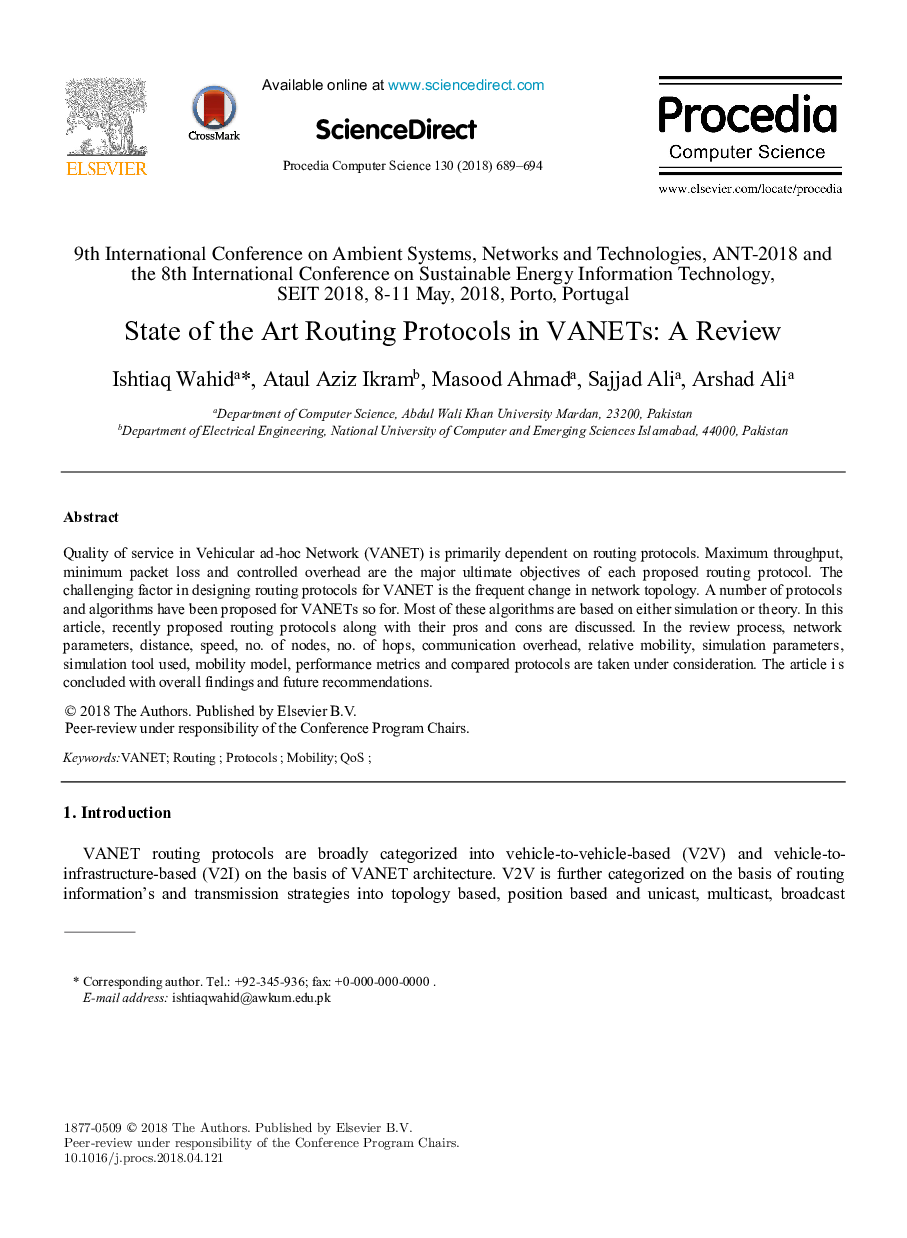| Article ID | Journal | Published Year | Pages | File Type |
|---|---|---|---|---|
| 6900105 | Procedia Computer Science | 2018 | 6 Pages |
Abstract
Quality of service in Vehicular ad-hoc Network (VANET) is primarily dependent on routing protocols. Maximum throughput, minimum packet loss and controlled overhead are the major ultimate objectives of each proposed routing protocol. The challenging factor in designing routing protocols for VANET is the frequent change in network topology. A number of protocols and algorithms have been proposed for VANETs so for. Most of these algorithms are based on either simulation or theory. In this article, recently proposed routing protocols along with their pros and cons are discussed. In the review process, network parameters, distance, speed, no. of nodes, no. of hops, communication overhead, relative mobility, simulation parameters, simulation tool used, mobility model, performance metrics and compared protocols are taken under consideration. The article is concluded with overall findings and future recommendations.
Related Topics
Physical Sciences and Engineering
Computer Science
Computer Science (General)
Authors
Ishtiaq Wahid, Ataul Aziz Ikram, Masood Ahmad, Sajjad Ali, Arshad Ali,
